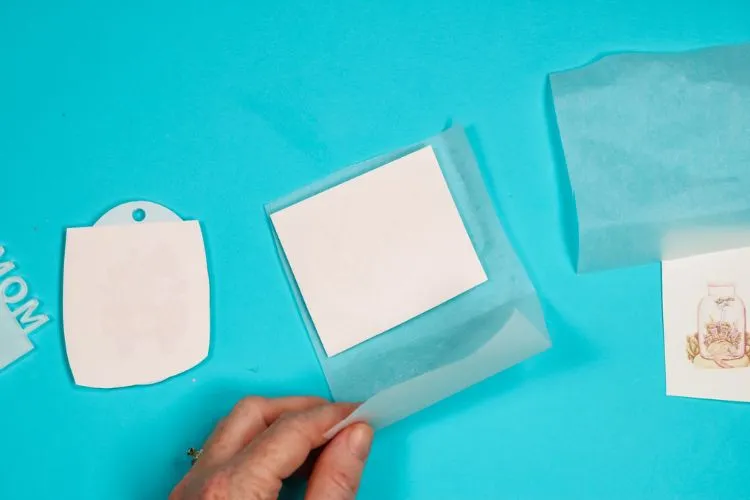In the world of printing and crafting, sublimation has emerged as a popular technique for transferring vivid and lasting designs onto various materials. Traditionally, fabrics have been the canvas of choice for this method.
However, the innovative application of sublimation on acrylic has opened up new creative avenues. So, can you sublimate on acrylic?
This article explores the feasibility of sublimation on acrylic and guides you through the process to achieve vibrant designs on this versatile medium.

What is Sublimation?
Sublimation is a digital printing process that uses heat to transfer dye onto materials. Unlike inkjet or laser printing, sublimation ink turns into a gas under heat and pressure, bonding to the substrate’s surface.
As a result, the print becomes part of the material, offering high-quality, durable designs. Its advantage over other types of printing lies in its ability to produce vivid colors and crisp images.
Understanding Acrylic
Acrylic is a synthetic material known for its strength, clarity, and versatility. It’s widely used in a variety of applications, from picture frames to signage.
Its ability to mimic the appearance of glass while being more durable and lighter makes acrylic an attractive choice for creative projects.
Sublimating on acrylic combines the material’s physical advantages with the aesthetic and durable finish of sublimation printing.
Can You Sublimate On Acrylic?
Yes, you can sublimate on acrylic, but it requires certain conditions for success. The process involves transferring a design from special sublimation paper onto the acrylic surface using heat.
However, not all acrylics are suitable for sublimation. The material must be pre-treated or specifically designed to accept the sublimation ink.
How to Sublimate on Acrylic: Step-by-Step Guide

Preparation of the Acrylic
Begin with a clean, smooth acrylic surface. Any dust or fingerprints can impair the quality of the transfer. Pre-treating the acrylic with a primer can enhance the adhesion of the ink, ensuring a clearer and more durable result.
Printing the Design
Create your design using graphic design software, keeping in mind that the final product will mirror the original design. Adjust the colors and contrasts to account for how they’ll appear on the acrylic. Print your design onto sublimation paper using sublimation ink.
The Sublimation Process
Before you press your design onto the acrylic, pre-heat your press according to the instructions specific to the type of acrylic you’re using.
The time, temperature, and pressure settings can vary, so it’s essential to follow the manufacturer’s recommendations. Place the paper onto the acrylic, and then apply heat and pressure to transfer the design.
Aftercare
Once the sublimation is complete, allow the acrylic to cool before handling. This process ensures the design sets properly. If necessary, seal the design to protect it further, though this may depend on the acrylic type and the intended use of the piece.
You may also like: Can you Bake Acrylic Paint in the Oven?
Tips for Successful Sublimation on Acrylic
Selecting the right type of acrylic is crucial. Look for acrylic sheets specially coated for sublimation. Avoid making common mistakes, such as overheating or inaccurate placement of the design.
By focusing on print quality and ensuring optimal equipment settings, you can achieve stunning results on acrylic.
Troubleshooting Common Issues
Issues like blurring or incomplete transfers are common but avoidable. Ensure the acrylic is clean and appropriately pre-treated before starting. Avoid moving the paper during the sublimation process to prevent smudges or ghosting.

Pros and Cons of Sublimating on Acrylic
Pros
Sublimating on acrylic offers a high-quality, durable finish with vibrant colors. The end products have a professional look, suitable for various applications, making it a versatile technique.
Cons
The process can be challenging, especially for beginners, due to the need for specific types of acrylic and precise equipment settings. Additionally, the initial setup and material costs may be higher compared to traditional substrates.
Pro Tips
When sourcing materials, opt for high-quality acrylic and sublimation supplies to ensure the best outcomes. Regular maintenance of your printing equipment will help avoid common issues that can affect print quality.
Finally, don’t hesitate to experiment with different designs and applications. Sublimated acrylic can be used in a wide range of projects, offering endless opportunities for creativity and innovation.
Maintenance and Care of Sublimated Acrylic Items

Maintaining the beauty and durability of sublimated acrylic items requires proper care. To clean, use a soft cloth dampened with soapy water; avoid abrasive sponges that can scratch the surface. For tougher stains, a non-abrasive cleaner specifically designed for acrylic can be used.
Protect the artwork from prolonged exposure to direct sunlight by placing items in shaded areas or using UV-resistant coatings to prevent fading.
Additionally, when using acrylic items outdoors, consider sealing them with a clear protective spray to guard against weather conditions.
Regular cleaning, along with careful placement and added protection, will ensure your sublimated acrylic retains its vibrancy and longevity.
Frequently Asked Questions (FAQs)
What types of acrylic are best for sublimation?
Acrylic sheets specifically treated or coated for sublimation tend to produce the best results. Regular acrylic may not properly bond with the sublimation dye.
Can you sublimate on acrylic at home?
Yes, with the right equipment and materials, you can sublimate on acrylic at home. However, it requires precision and care to achieve professional results.
How do I prevent my design from smearing or not transferring properly?
Ensure the acrylic is perfectly clean and pre-treated if necessary. Use proper time, temperature, and pressure settings, and avoid moving the print during transfer.
Do I need special sublimation ink or paper for acrylic?
Yes, you will need sublimation ink and paper designed for use in sublimation printers. These specific supplies ensure the best transfer quality on acrylic.
Can sublimated acrylic items be used outdoors?
While sublimated acrylic is durable, prolonged exposure to sunlight and weather can affect the quality of the design. Using UV-resistant acrylic or applying a protective coating can help extend the life of outdoor items.
Conclusion:
Sublimating on acrylic offers a unique way to create vibrant and durable designs on a versatile material. While the process can be technical, understanding the proper steps and settings makes it manageable.
With careful preparation and attention to detail, you can explore the creative possibilities of sublimating on acrylic.

Meet Isabella Anderson, your acrylic painting mentor with over a decade of brush-wielding mastery. Dive into the colorful world of acrylics with her expert guidance, featured exclusively on ‘Acrylic Authority.’ Unleash your inner artist and explore the limitless possibilities of this versatile medium alongside a true acrylic aficionado.
